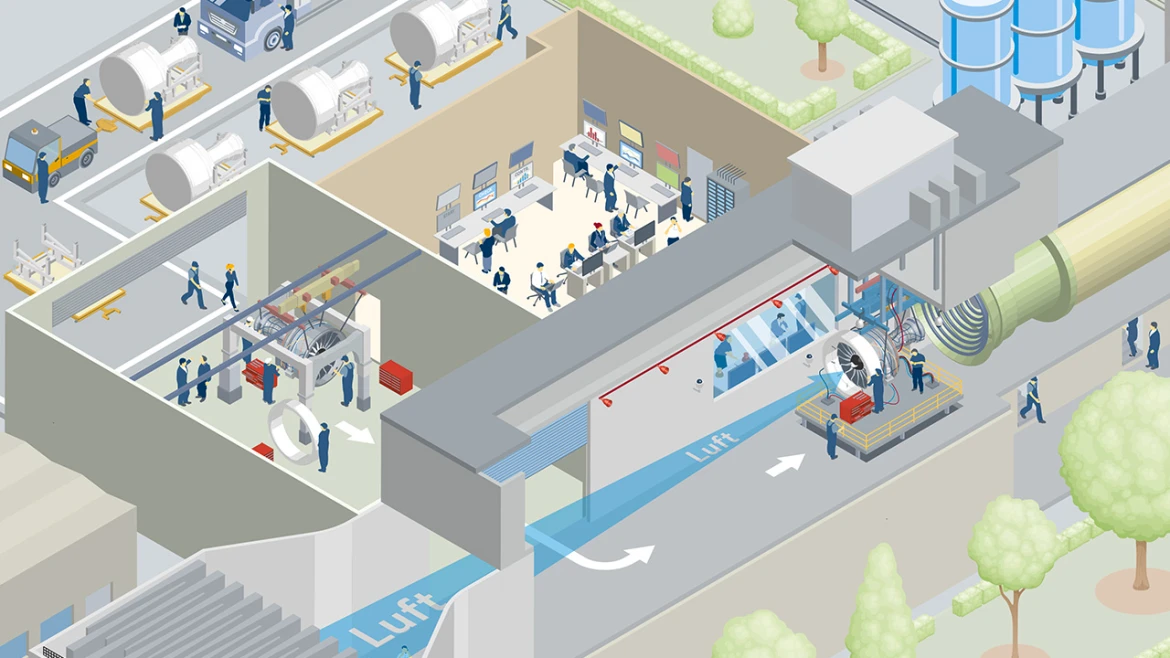good-to-know
A look inside an engine test cell
Development tests and production acceptance tests have different goals and require different activities, but the steps the engine goes through in the test cell are always the same.
author: Thorsten Rienth | 3 mins reading time published on: 01.11.2017
author:
Thorsten Rienth
writes as a freelance journalist for AEROREPORT. In addition to the aerospace industry, his technical writing focuses on rail traffic and the transportation industry.

Engine test runs are choreographed procedures that, while being easily plannable, require a large number of different activities depending on the purpose of the test.
A development test run is intended primarily to validate theoretical assumptions in practice. To this end, components are sometimes deliberately subjected to loads that normally do not occur in conventional flight operations. Due to the individual instrumentation and many measuring points, rigging is usually a time-consuming business.
Production acceptance tests on new or freshly overhauled engines on the other hand verify clearly defined performance parameters. They can be carried out considerably faster, because the engine and test cell are connected up using interfaces that can be quickly coupled. MTU’s Munich site handles one third of the PW1100G-JM acceptance tests on new engines. MTU Maintenance Berlin-Brandenburg in Ludwigsfelde is responsible for production acceptance tests on all TP400-D6 engines destined for German A400M transporters.
But whatever test is due to be carried out—the steps the engine goes through in the test cell are always the same.








